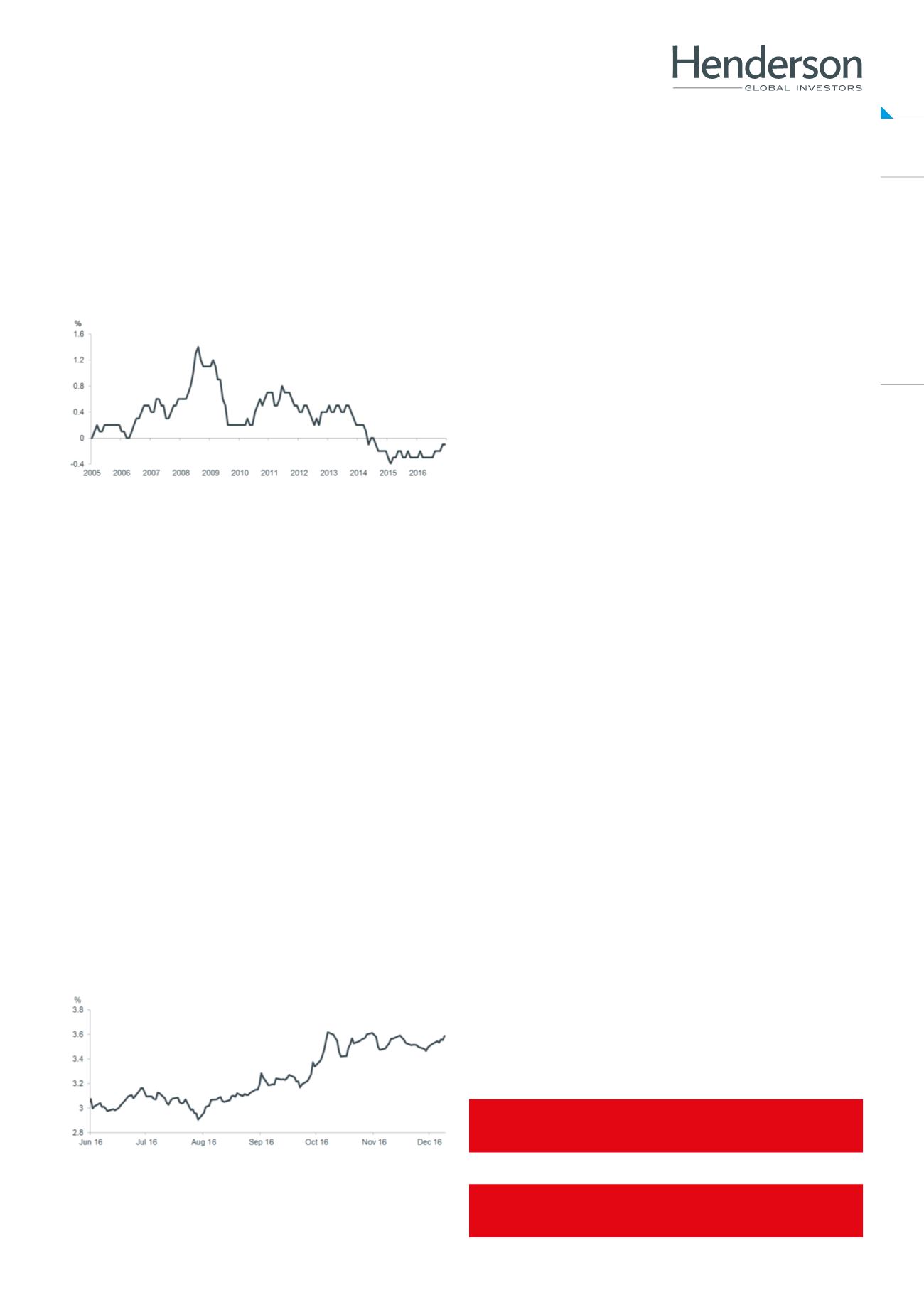
DIY Investor Magazine
/
Jan 2017
15
These pressures would be compounded by Trump’s
negative stance on immigration and plans to lower taxes
and increase spending. Hence “Trumpflation” enters the
lexicon.
Chart 2 – Falling food prices have weighed on
inflation
Source: Thomson Reuters Datastream, as at December 2016. Food & beverage
contribution to CPI inflation.
ource: Thomson Reuters Datastream, as at 9 December 2016. Chart shows the UK
5-year/5-year inflation swap rate. Used as an indicator of medium-term inflation. The MPC
is the Bank of England’s Monetary Policy Committee and is responsible for setting interest
rates, with the aim of keeping inflation at – or close to – their current target of 2%.
What about Brexit?
In the UK, Brexit – be it ‘soft’ or ‘hard’ – is likely to have
similar trade-related inflationary effects. Add to that
the impact of sterling’s devaluation, which plunged
dramatically following the Brexit vote, and imported
inflation should reach the high street (or out-of-town
shopping centres these days) as cost increases are
passed to consumers.
Marmite and Toblerone have been in the headlines
already on that subject. While this should have a more
transitory impact, higher headline inflation figures will
bolster wage negotiations.
Chart 3 – Medium term inflation expectations above
MPC’s 2% target
Markets are reflecting these changes. Bond markets
are selling off and forecasts suggest a belief that higher
inflation will come through over the next few years, as
chart 3 shows.Yield curves are steepening, indicating
the expectation of high interest rates, and index-linked
bonds, which can provide some protection from
inflation, have benefited from strong investor interest.
Central banks have subtly changed their tune; they
are now willing to accommodate or even encourage
inflation. We see these trends continuing as inflation
moves from its current very low base; ‘normalisation’ still
has some way to go.
Portfolio implications
In terms of what the return of inflation means for the
fund, the bond portfolio can be protected to some
degree by keeping low duration and holding index-
linked bonds. The latter currently represents a third of
the fixed income portfolio. We also continue to hold a
relatively large exposure to UK equities – an area of the
market that might be expected to benefit as investors
switch from bonds. Higher inflation should also increase
nominal returns (the total rate of return, including
inflation), although this is a debatable point. We must
accept that there may be negative consequences for
stock prices if inflation is seen to be dangerously high.
We are invested in a number of domestic sectors which
should perform relatively well if inflation does indeed
pick up as expected, including travel and leisure,
retail, banks, insurance and support services. Banks,
for example, would be expected to benefit from rising
inflation via higher rates on lending, while retailers are
generally able to pass on higher costs to consumers –
up to a point. In our view, bank note printer De La Rue,
currently in the portfolio, should be one of the more
obvious beneficiaries from higher inflation.
Past performance is not a guide to future performance. The value of an investment and
the income from it can fall as well as rise and you may not get back the amount originally
invested. The information in this article does not qualify as an investment recommendation.


